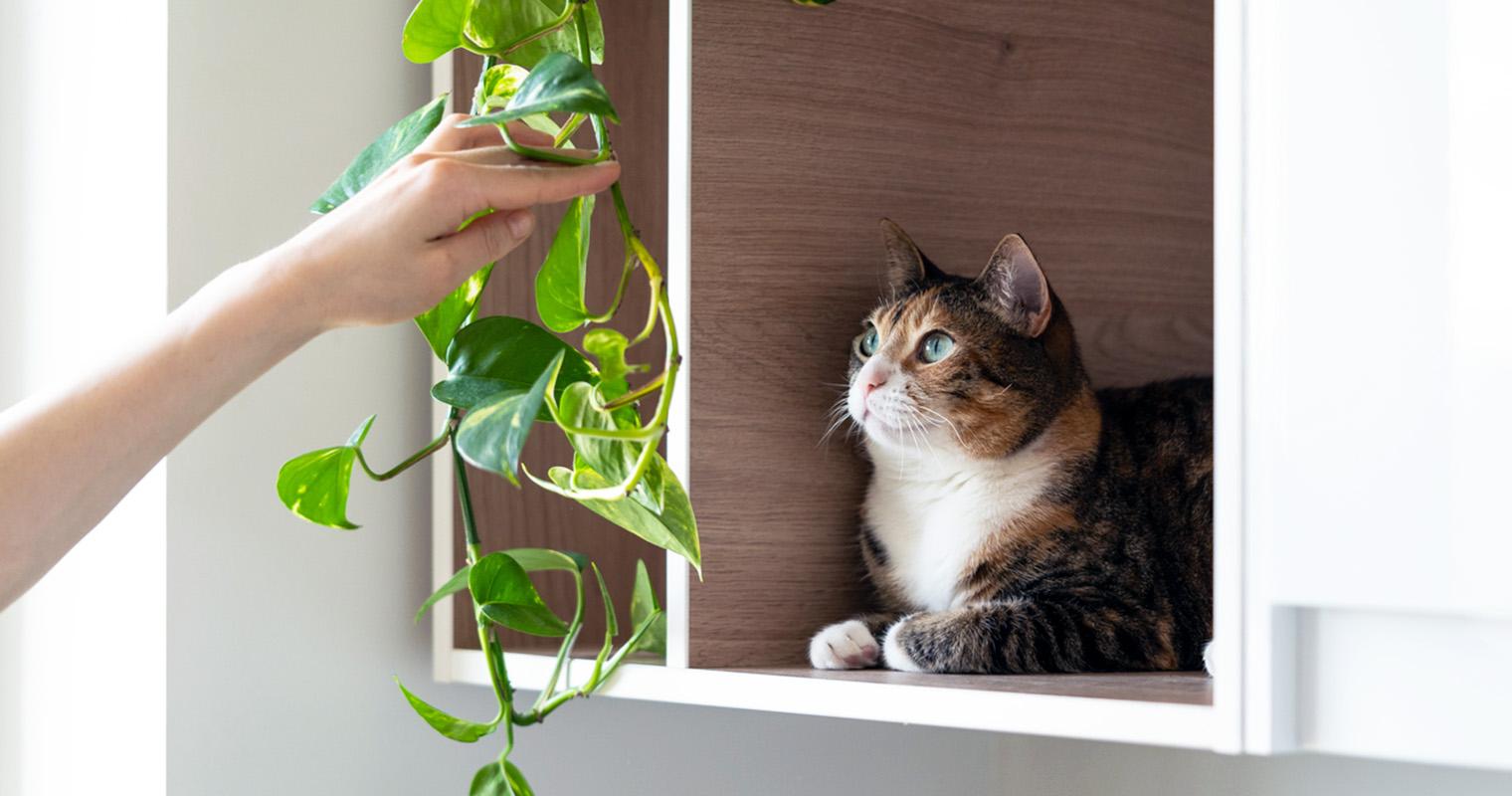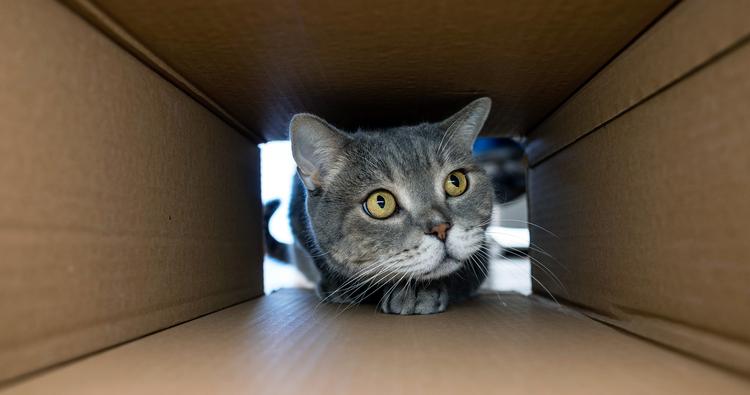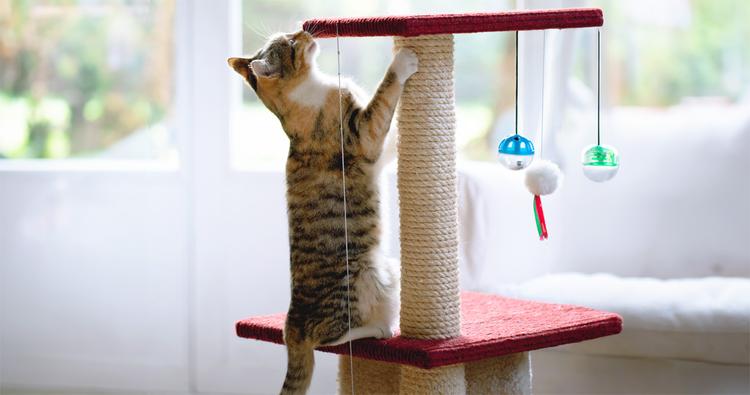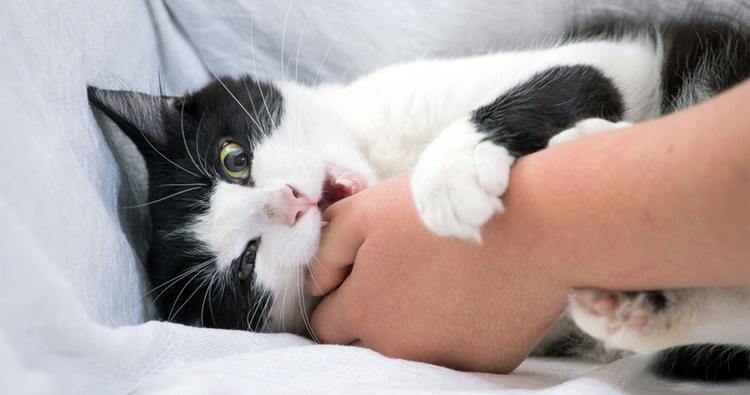Adopting a Cat? Here’s How to Prepare Your Home for a New Kitty
Ready to welcome a new feline friend? Here’s how to make sure your home is ready for their arrival.
Ready to welcome a new feline friend? Here’s how to make sure your home is ready for their arrival.
by Katie Koschalk, | April 22, 2024

Dima Berlin / iStock
Adopting a new cat is undoubtedly exciting, but not as simple as plopping your kitty down in your house and hoping for the best. It requires preparation to ensure both you and your new feline companion undergo a smooth transition. This entails stocking up on necessary supplies, removing potential hazards, safeguarding certain items in your house, and making adjustments that keep your cat safe and help them feel welcome.
Not sure where to begin? Whether you’re a first-time or seasoned cat parent, the following tips will help you create the best environment for you and your new feline.
Kitty-proofing your abode can promote the well-being of your cat and your living space.
A cat’s sharp claws can do serious damage to upholstered or rattan furniture. Here are a few tips to keep your furniture intact:
Put double-sided tape on furniture: Apply strips of double-sided tape to the corners or edges of your furniture where your cat likes to scratch. When they scratch it, the sensation of the sticky tape on their paws will discourage them from continuing the behavior.
Provide several scratching surfaces: To redirect your cat’s scratching away from your furniture, provide multiple scratching posts or other scratching surfaces throughout your home. Place these surfaces near furniture your cat might be inclined to scratch, such as sofas or chairs.
Use deterrent sprays or scents: Try using natural cat deterrent sprays that contain scented ingredients, such as citrus, which cats find unpleasant. Spray the deterrent on the areas of your furniture that your cat likes to scratch. Over time, your cat will associate the unpleasant scent with scratching those areas and be less likely to continue the behavior. (First, test the spray on a small, inconspicuous spot on your furniture, to make sure it doesn’t cause damage or discoloration.)
If your cat continues to scratch your furniture despite these efforts, consider having your items professionally reupholstered and then using covers to protect them.
Cats are naturally inclined to climb and explore elevated areas, making shelves and countertops prime spots for feline adventurers. Before bringing your new kitty home, clear off any shelves or countertops to prevent items from being knocked over or damaged.
Additionally, check that any freestanding shelving units are securely attached to the wall to prevent them from falling over when your cat inevitably decides to climb them.
Cats, particularly kittens and young felines, can squeeze into tight spaces — even those that may seem impossible for their size. Before bringing your new cat home, thoroughly inspect your living space for any potential hiding spots or small openings where your cat could become trapped or lost. Block off these areas using furniture or other low-sitting items, to prevent your cat from accessing them.
Put away or throw out small or sharp objects that could be swallowed or cause injury. This includes things like rubber bands, paper clips, sewing needles, and small children’s toys. Even objects like coins or buttons should be kept out of reach, as they can cause serious harm if swallowed by your curious cat.
As a responsible cat parent, it’s vital to be aware of potential hazards, especially dangerous plants and food, within your home.
The list of toxic plants for cats is long, but some of the most common include:
Lilies
Aloe vera
Pothos
Snake plant
Monstera plants
Jade plants
Sago palms
English ivy
Dieffenbachia
Hyacinth
Tulips
Daffodils
Chrysanthemum
Poinsettia
You can find a complete list of indoor and outdoor plants that are toxic to cats on the ASPCA’s Poisonous Plants webpage.
As for food, you’ll want to keep these out of your kitty’s reach:
Alcohol
Bread dough containing yeast
Raw fish
Bones
Uncooked eggs
Fat trimmings
Dairy
Chocolate
Coffee
Citrus fruits
Grapes and raisins
Nuts (especially macadamias)
Garlic
Salt and snack foods that are salty
Coconut
Onion of any kind (red onion, yellow onion, shallots, scallions, chives, leeks, etc.)
Xylitol (a common sweetener in packaged foods such as gum and candy)
While the above foods are definite no-nos, you should avoid giving human food to cats in general, as cats are obligate carnivores with different dietary needs than us. Too much human food can cause diarrhea, vomiting, or even more severe issues like pancreatitis.
When bringing a new cat into your home, it’s crucial to introduce them to their new environment gradually, to help them feel safe and secure. Here’s a step-by-step guide on how to do this.
Start by isolating your cat in a quiet room, like a bathroom or guest room, where they can adjust to their new surroundings. This room should include all the essentials, including food, water, a litter box, a cat bed, a cozy blanket, cat-safe toys, and a hiding spot or two.
Once your cat appears at ease in their isolation room, gradually introduce them to other areas of your house, one at a time. Keep doors closed to rooms you don’t want your cat to have access to yet. This gradual approach prevents them from becoming overwhelmed by too much space too soon.
Let your cat explore their new surroundings at their own pace. Avoid forcing them out of their comfort zone or picking them up and putting them in a new area. Instead, let them approach new areas (and objects) on their terms.
Offer your cat plenty of praise and treats as they hit new exploratory and behavioral milestones. For example, if they confidently walk into the living room, give them a pet (if they’re open to that), a cat treat, and some reassuring words in a calm, happy voice.
See our guide for more tips and information about introducing a new cat to your home.
In addition to the tips we’ve already covered, here are some extra recommendations to support the safety and well-being of your new kitten or adult cat.
Before bringing your cat home, educate each member of your household about how to interact with and respect your new cat. Discuss proper handling techniques, respecting the cat’s space, and understanding the cat’s body language.
Introducing a new cat to existing household pets requires careful planning, supervision, and a gradual approach. Rushing the introduction process could lead to long-term issues between the animals. Refer to our guides on introducing a new cat to a resident cat or to a resident dog to minimize stress in either animal.
Whether your new cat is a kitten or an older feline, they should have their first wellness visit with a veterinarian within the first couple of weeks following adoption. However, the timing can vary slightly if your cat requires a longer adjustment period, or if they’re due sooner for a core vaccination. Check out our guide on a kitten’s first vet visit to learn more about what to expect.
Keeping your cat indoors is highly recommended to safeguard them from potential hazards such as traffic, predators, and diseases. Indoor cats typically enjoy longer and healthier lives than their outdoor counterparts.
However, you can provide your cat with outdoor access by creating a safe enclosure, known as a catio, where they can enjoy the sights and sounds of the outdoors in a protected environment. Another option is to train your cat to wear a harness and leash, allowing for supervised excursions in your yard.
Before bringing a cat into your home, research the responsibilities of cat-parenting such as providing proper nutrition, regular veterinary care, and mental stimulation. Additionally, consider factors such as your living situation, lifestyle, and the cost of having a cat to ensure you can provide a suitable lifestyle for a new cat.
Before bringing home a new kitten, you should buy several supplies, including a cat carrier, food and water bowls, kitten food, a litter box and litter, a cat bed, cat-safe toys, a scratching post, a collar with an ID tag, grooming supplies, and cleaning supplies.
Introducing cats to each other requires careful planning and a gradual approach to prevent conflicts and encourage harmonious coexistence. Initially, isolate the new cat in a separate room, and follow proper cat-introduction guidelines to help reduce tension and promote positive associations.
To introduce a new cat to your dog, start by allowing them to become familiar with each other’s scents through scent-swapping and gradual introductions from a distance. Supervised interactions should be rewarding for both animals, gradually increasing in duration as they become more comfortable with each other.
How to pet-proof your home for the holidays

Katie Koschalk is a freelance writer based in Northern California. Fusing her love and knowledge of animals with her journalism degree and years of professional writing, Katie is dedicated to improving the lives of pets and their caretakers by sharing helpful and accurate information. When she’s not at her desk, you can find her exploring trails with her Aussie, Hunter, cooking plant-based meals, and talking to her two cats, Jax and Sadie, in really ridiculous voices.

Behavior & Training

Adoption Advice

Behavior & Training

Adoption Advice
Uncover the truth behind this practice and its impact on feline well-being.

Behavior & Training
From play bites to I’m-in-pain bites, we break down the many reasons felines may sink their teeth into you — to help you fix the issue.

Behavior & Training